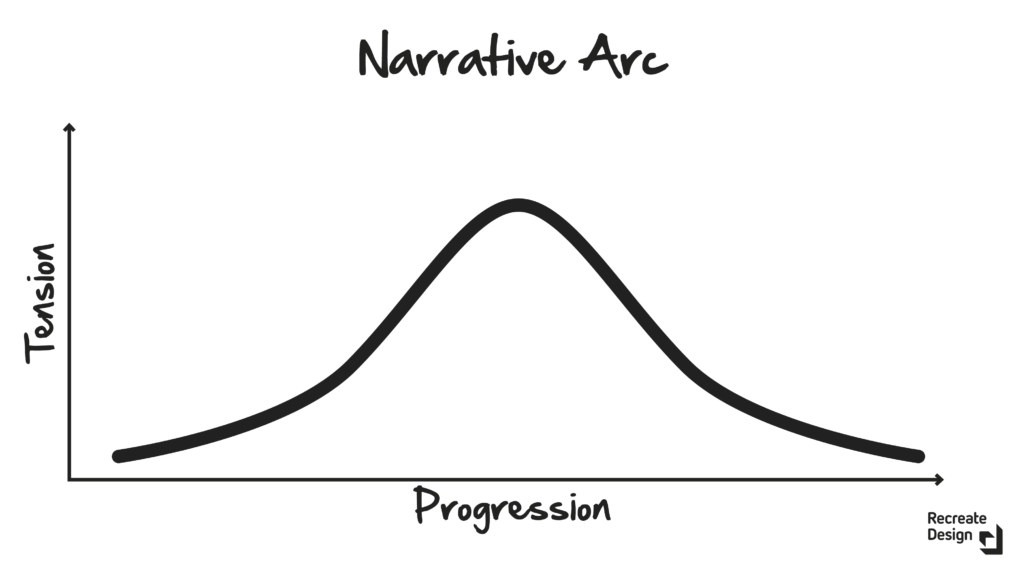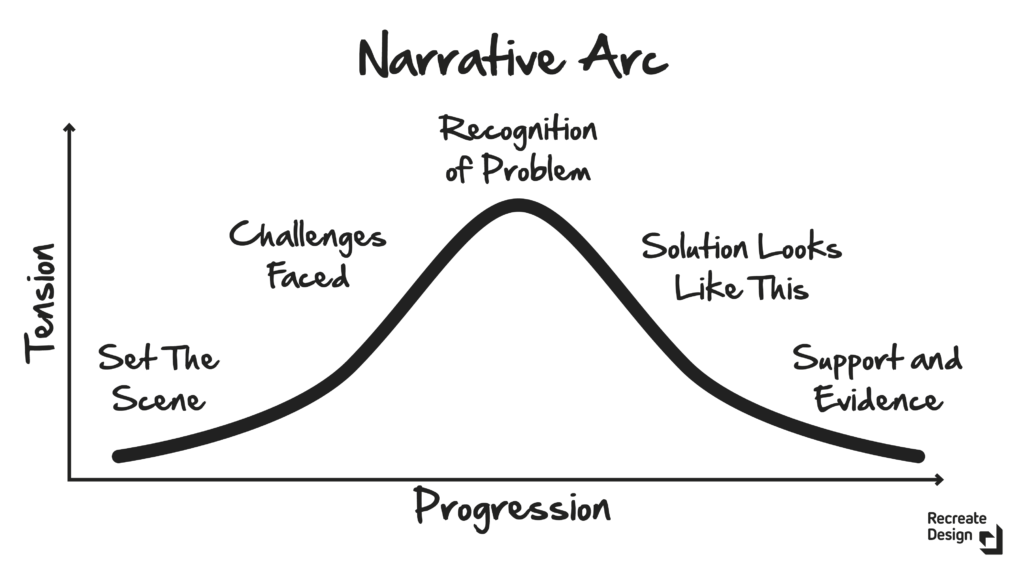I’ve recently worked with two different clients on their pitch decks. One is pitching for a sale, one is pitching for investors. Whatever the goal of the presentation, there is a process that can really help to provide structure, flow and have impact.
A pitch, a presentation a brand proposition – they are all aiming to do the same thing. Identify a problem > offer a solution. Great, two slides and we’re done. If only! I always advocate keeping any communication succinct, but to pitch we have to take our audience on a slightly longer journey. The sort with a beginning, a middle and an end. A story.
We all know stories are a fundamental feature of the human state. Here’s the thing – there’s a tried and tested method to constructing compelling stories. It’s a stable of the literary world (not to mention the worlds of speech writing, marketing, education… the list goes on). It is called the narrative arc.

Along the form of the arc the story-teller progresses the narrative and looks to build tension to a seemingly insurmountable point (the top of the curve). However, the heroine does the impossible – overcomes the great challenge, dilemma, crisis that is before them. This resolution immediately calms the tension and the reader is smoothly transitioned to a state of relief, calm and success.
Now, imagine a prospective customer listening to a story that relates to their market. Imagine if they can feel the tension, recognise the uphill struggle and know (on some level) they need help to get over the top. Imagine if someone offered that help, the way out, a route to success.
That’s the magic! This is when listeners transition to characters. They see that they started at the beginning and are often languishing around the middle. Suddenly, someone has shown then the ending, the ending they were looking for, the ending they want to reach!
Here’s the diagram again.

This time, I’ve applied my five stages to pitching a business case as a story.
Set The Scene – What is happening right now. Normally some sort of change.
Challenges Faced – More specific detail on what isn’t working, has changed, could be much better etc. Using stats or market insight to backup your assertions really helps.
Recognition Of The Problem – The crescendo. The big, big problem summarised. Everything so far as led to this point.
Solution Looks Like This – Fear not, we have the answers. Here’s what we can do to move you forward (why you want/need us/this).
Support and Evidence – Proof that you can deliver what you promise. Impact stories, results, validation.
Call To Action – It’s not on the diagram, and the whole thing is a call to action, but end with a let’s have a conservation style message.
That’s it. The narrative arc applied to making a compelling pitch or proposition! Winning business has never been so novel.